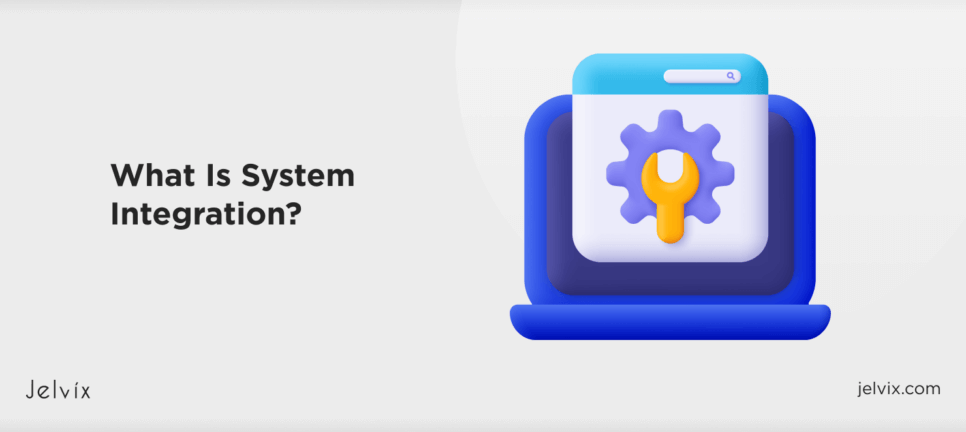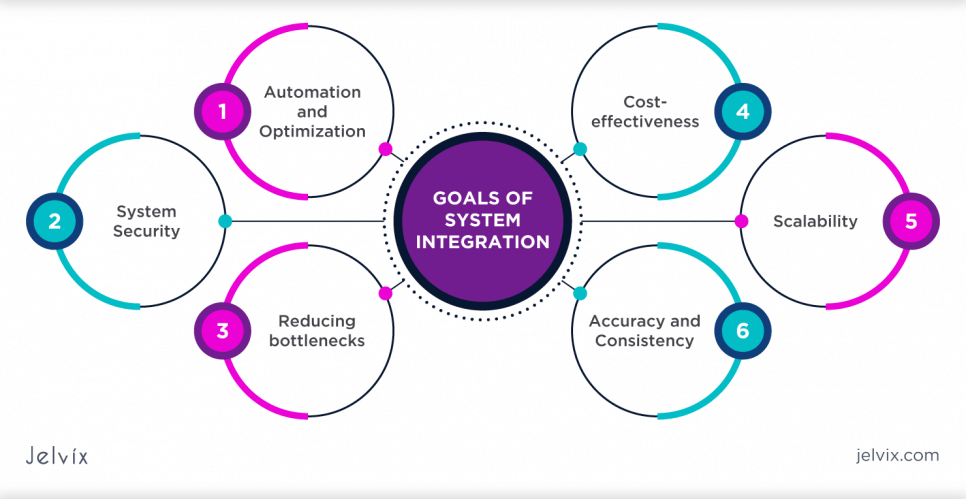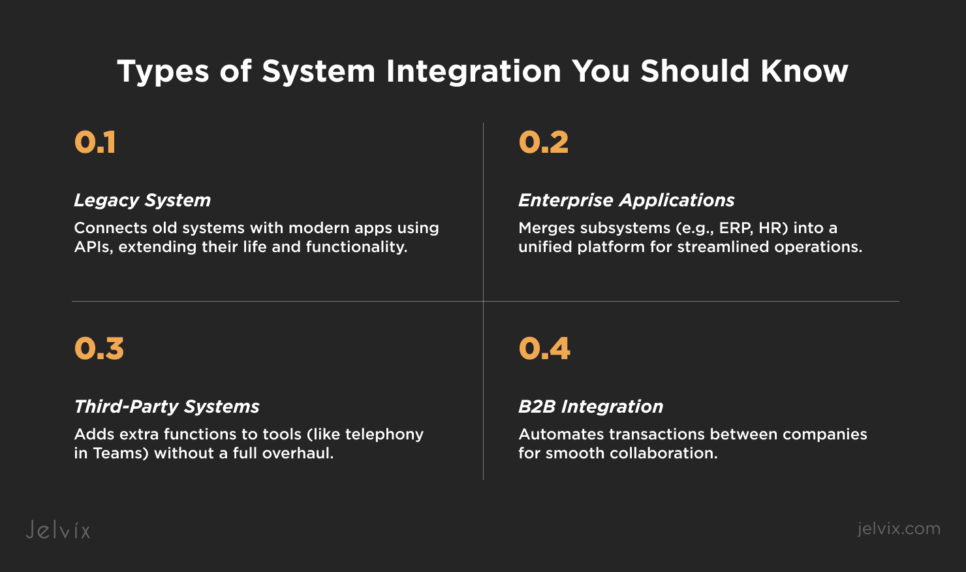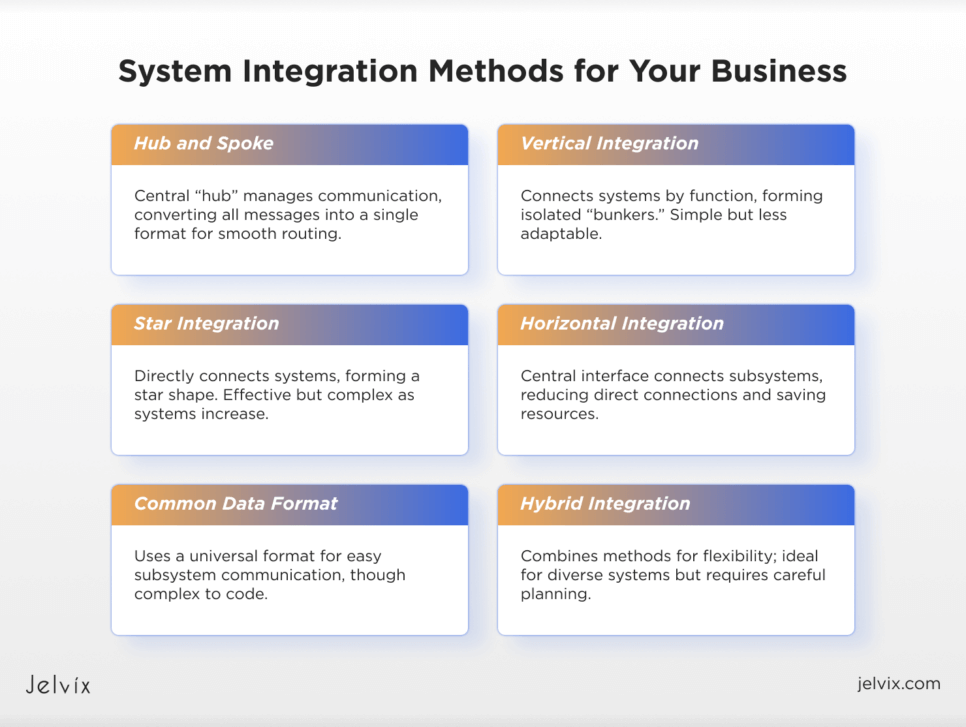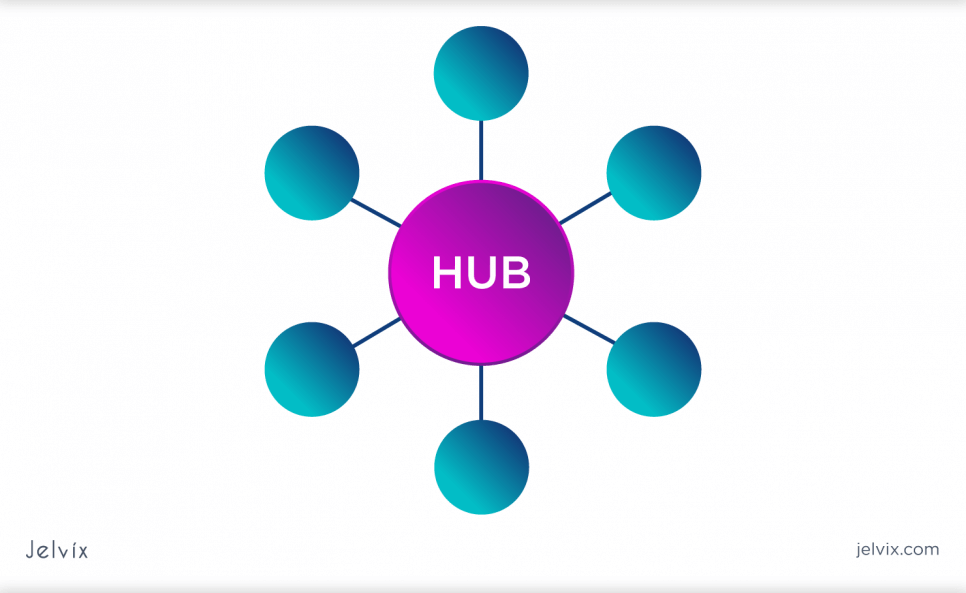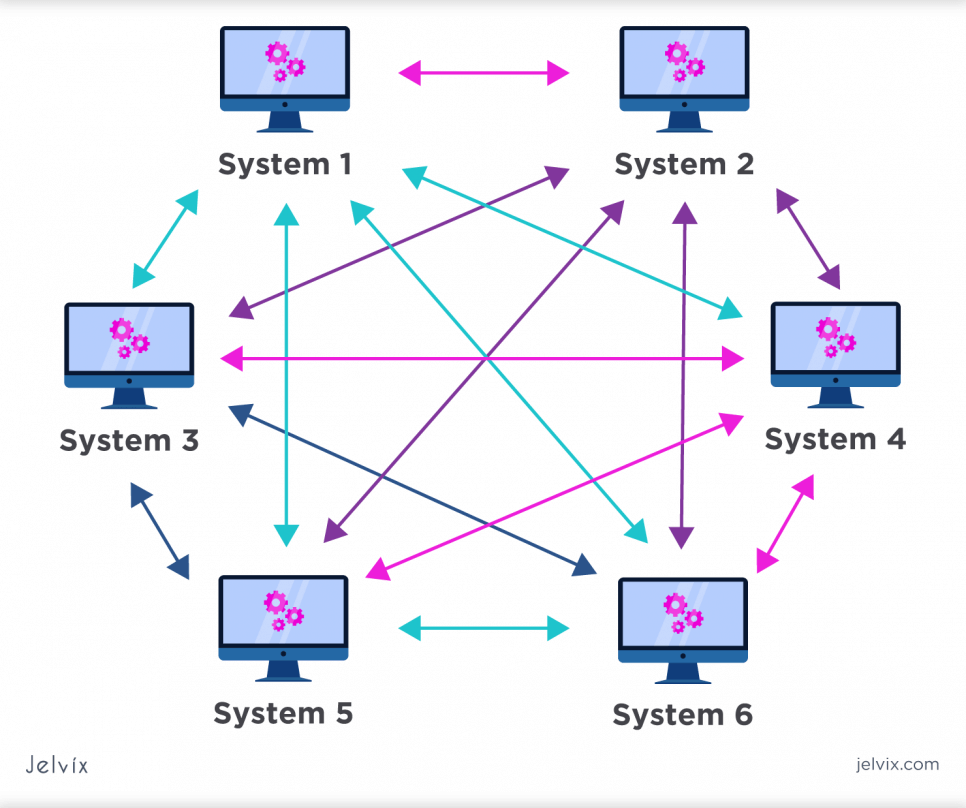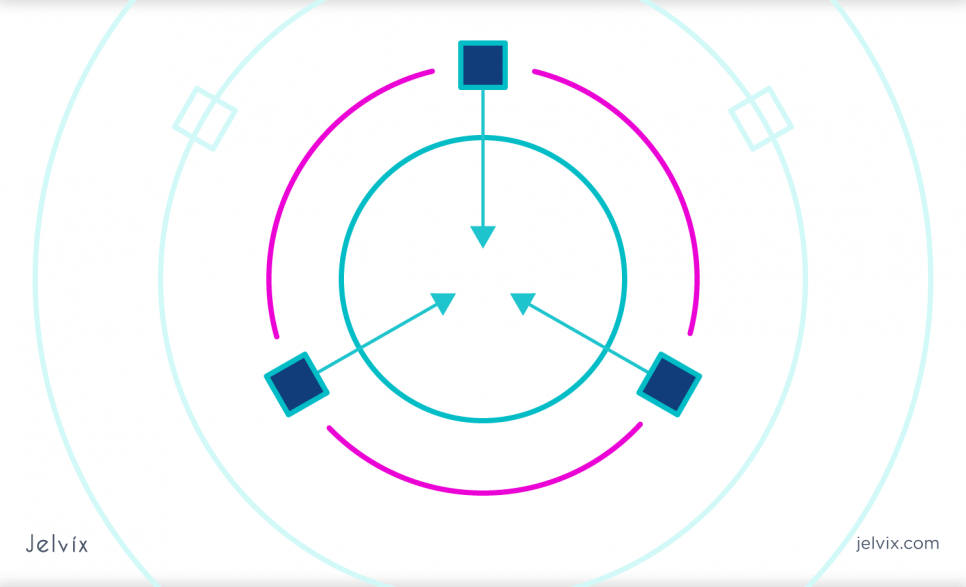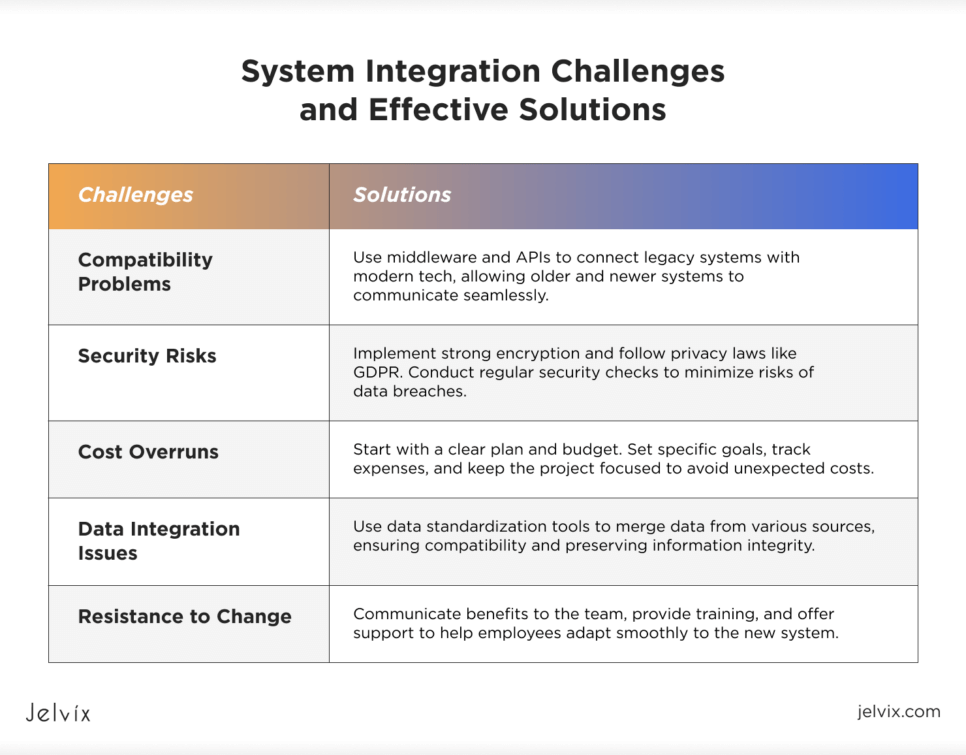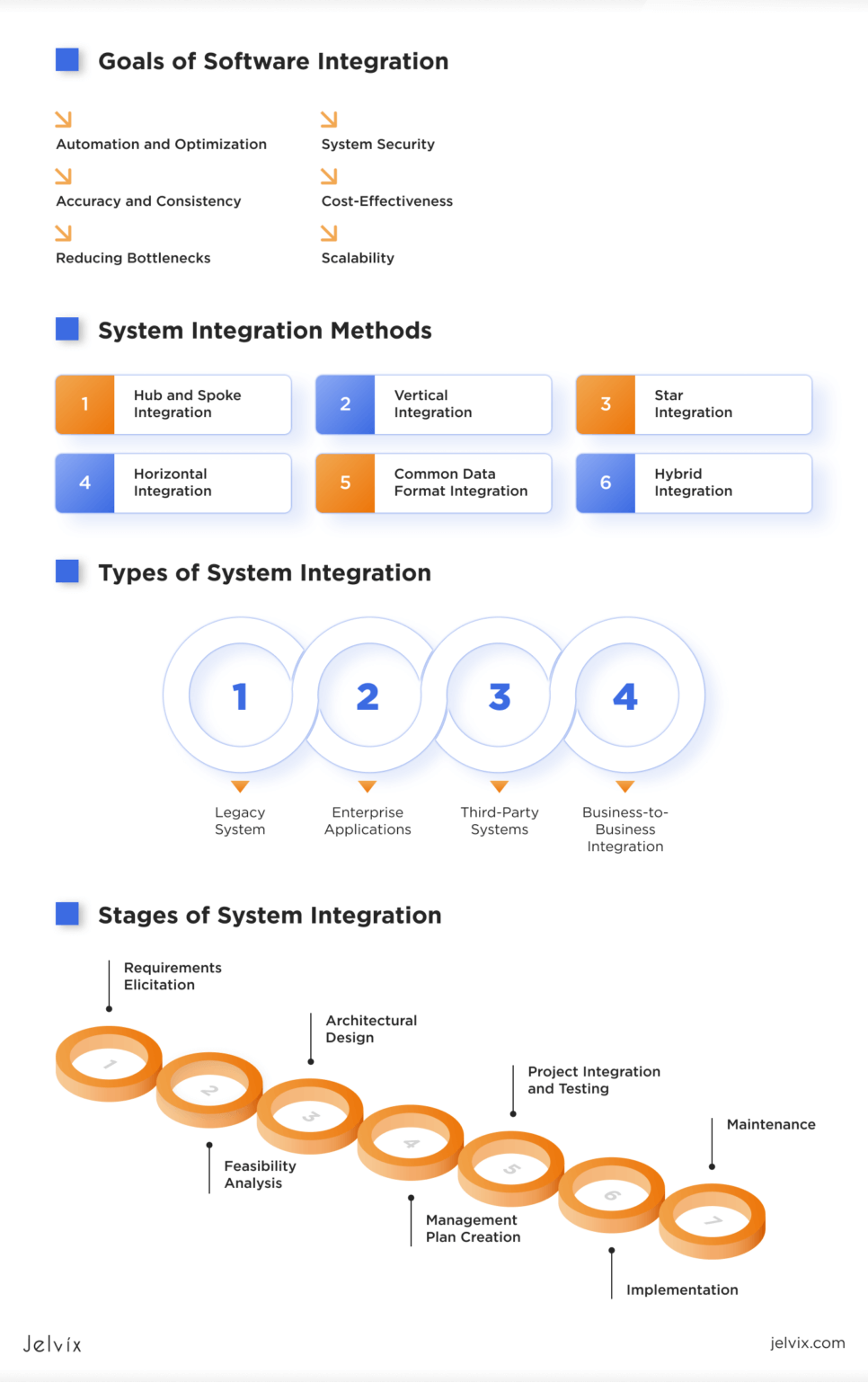As your organization rises, so does the number of software solutions that help it stay organized and efficient. In 2022, it was reported that companies worldwide used an average of 130 SaaS applications.
One key problem of operating many systems and apps is that complexity grows with every new tool added. What’s more, disparate systems often find it difficult to communicate with one another, making data spread across various platforms. However, a well-executed system integration process can give your company everything it needs to grow while lowering operating costs.
In this article, we’ll cover existing methods and technologies to meld separate pieces of software into a single ecosystem, touch on key integration steps, and explain the role of system integration in business transformation.
What Is Digital System Integration?
System integration means connecting various subsystems or subcomponents into a coherent infrastructure that functions as a whole. While physical components include all the hardware modules of a system, virtual elements consist of all data stored in software, applications, and databases. Combining them requires a deep understanding of the software and extensive knowledge of various technologies.
The global SI market is expected to reach nearly $955.21 billion by 2030. This growth is not surprising. System integration allows organizations to align their technology ecosystems for the self-governed exchange of information between different subsystems. The integration helps in implementing digital transformation with maximum efficiency.
Key Goals of Software Integration Explained
Businesses are adopting system integration primarily to ensure that all systems work harmoniously together to increase productivity and improve the quality of day-to-day operations. However, there are a few more goals that you need to know.
Automation and Optimization
One of the most considerable outcomes of the SI process is that data sampling and processing become much easier, and all relevant and correlated data is combined. If the system integrator you hired does well, your business processes will be streamlined and automated thanks to perfectly tuned data links.
System Security
Securing multiple systems or relying on software solution providers creates additional risk for your business. With one system, you can easily build in the security tools you need to prevent unauthorized users from accessing customer and company data.
Reducing Bottlenecks
An inefficient system means slow performance. Communication delays can greatly reduce the organization’s ability to act quickly. Integrated systems eliminate these bottlenecks, which leads to increased efficiency throughout the organization.
Cost-Effectiveness
The value of an integrated system is that it eliminates repetitive tasks, allowing them to be performed more efficiently using the same resources. Additionally, a single store does away with the necessity for many stores to hold the same data. Each subsystem’s specific data can be stored there, and any data overlaps can be systematically categorized.
Scalability
A separate storage or computing platform for each subsystem requires excessive cloud resources. It is needed to enhance the capacity of each subsystem separately as the amount of data grows. In an interconnected system, all subsystems can use shared resources as needed. So, one of the main advantages of integration is its potential to scale your infrastructure painlessly.
Accuracy and Consistency
The system integration process often entails gathering data from several sources and storing it in one place. After the integration, there is no need to wait for a long time for data to be manually synchronized between various systems. Instead, all other systems immediately update the data when one subsystem modifies it. Real-time data access will be the result of global system integration.
The Four Types of System Integration You Need To Know
Many companies use more than one type of software and benefit from combining them differently, depending on their needs. Let’s look at the different kinds of system integration they can leverage.
Legacy System
This involves connecting modern applications to older systems using APIs, webhooks, and other tools. It modernizes legacy systems by enabling them to communicate seamlessly with new technologies, extending the life and functionality of existing investments.
Enterprise Applications
Enterprise application integration merges various subsystems into one environment. This can include point-to-point, vertical, or horizontal integration, combining different tools (e.g., ERP, HR, and accounting systems) into a unified platform.
Third-Party Systems
Integrating third-party systems extends the functionality of existing tools without the need for a new platform. For instance, adding telephony services to an existing communication tool like Microsoft Teams enhances its capabilities without a full system overhaul.
Business-to-Business Integration
B2B integration automates transactions and document exchanges between companies. It streamlines collaboration with partners, suppliers, and customers by connecting systems like a retailer’s purchasing software with a supplier’s ERP, creating a seamless network.
Six System Integration Methods That Can Work for Your Business
Choosing the right system integration method depends on your business’s specific needs, systems, and goals.
Selecting the correct system integration method is challenging, as you need to choose the right subsystems, the right places, and the right nature of the relationship. To handle this, you can request the development and integration of custom enterprise solutions from experts. At Jelvix, we work with your existing legacy systems and deploy a hybrid integration platform to help you increase the productivity of your daily business operations.
Method 1: Hub and Spoke Integration
This type of integration deploys a “cartwheel” design, where each subsequent system has a single integration point (“spoke”) with a centralized storage, “hub.” The hub serves as a message-oriented middleware converting all messages from all connected apps into a single canonical data format language and assuring that these messages are routed properly to their correct destination.
Method 2: Vertical Integration
Vertical system integration differs from other types of system integration in the form of structure. In this method, systems are connected based on their function, forming a “bunker” model. This type of system integration is quite simple and involves a limited number of systems, but it can be inflexible. Adding any new functionality means adding your own “store,” ultimately making managing difficult.
Method 3: Star Integration
In this method, each system is directly connected to the others, forming a star-like structure. However, as more systems are added, it becomes complex and difficult to manage. A perfectly neat IT infrastructure quickly becomes cluttered and hard to display if a company approaches software integration using this method.
Method 4: Horizontal Integration
Here, subsystems are connected through a central interface, reducing the number of direct connections. For example, three subsystems will have only three connections. The cutback in the number of connections required to maintain functionality decreases the time, effort, and funds spent building the system. That middle layer/subsystem utilized in system integration is well-known as the Enterprise Service Bus.
Method 5: Common Data Format Integration
This method uses a universal data format to allow subsystems to communicate easily without multiple adapters. All subsystems communicate and act independently, which is one of the main advantages of common data format integration. However, this method has its drawbacks being very complicated and requiring advanced coding abilities.
Method 6: Hybrid Integration
This combines two or more integration methods to maximize the flexibility and scalability of a system. Hybrid integration offers an effective way to connect disparate systems and meet changing business requirements. However, it requires careful planning and a clear roadmap and can be complex to design and maintain.
How Does System Integration Help Open up Benefits of Digital Transformation
System integration plays a vital role in making digital transformation work more smoothly for businesses.
Impact on Business Efficiency
When different systems can communicate with one another, data can move across departments without manual input, cutting down on mistakes and speeding up operational processes. This means quicker decisions, faster workflows, and a more efficient business overall.
Impact on Productivity and Scalability
Integrating systems automates routine tasks, freeing up employees for more important work. With connected systems, companies can add new services and expand their operations without much hassle, allowing them to adapt quickly to a changing digital market.
Supporting Omni-Channel Customer Engagement
System integration helps businesses connect with customers through websites, apps, and social media. This ensures a seamless user experience for all clients. Companies can track and respond to customer needs more efficiently, providing personalized service and improving customer satisfaction.
Learn the key steps and strategies to start your business's digital transformation and stay competitive in the digital age.
Approaches to Connect Systems
There are different ways to communicate between separate systems. Let’s briefly examine the most frequent connectors.
Webhooks, or HTTP callbacks, are real-time messages transmitted from one system to another when a specific event occurs. For instance, accounting software may receive web-based transaction notifications from payment gateways or online banking systems.
Application programming interfaces are the most widespread way to link two systems. Sitting between apps and web services, they transfer data and functions in a standardized format.
Electronic Data Interchange, or EDI, exchanges business information in a standard electronic format that substitutes paper documents. EDI is typically done in two ways: via a value-added network, where a third-party network is responsible for data transmission, or directly via the Internet.
Orchestration combines repetitive processes to improve production and information flow. Orchestration systems provide automated system integration and task scheduling across multiple solutions. Users can connect to any service to access data, automating various programs and processes.
Middleware is a hidden software layer that unites distributed systems, apps, services, and devices. It performs various tasks such as data and application programming interface management, messaging, and authentication. The cloud middleware can be accessed through the API. In such a case, an API gateway could be considered a middleware between services and systems.
System Integration Solutions and Challenges They Help Resolve
Integrating IT systems can be challenging. However, the right approach will let you do it smoothly.
Compatibility Problems
Connecting legacy systems with modern tech is often problematic, as older systems weren’t built to support innovative features and high workloads. To address this issue use tools like middleware and APIs. These act like translators, helping old and new systems communicate so they can work together without problems.
Security Risks
Integrating different systems can open up new risks for hacking or data breaches. The more systems you connect, the more chances there are for security issues. Make sure to protect your data with strong encryption and follow privacy laws like GDPR. Regular security checks help ensure everything stays safe.
Cost Overruns
IT integration projects can quickly become more expensive than expected due to unplanned complications. Start with a clear plan and budget. Set goals, track spending, and keep the project focused to avoid any surprises along the way.
Data Integration Issues
Combining data from different sources can be a real headache, especially when the data is in different formats or stored in different ways. Use tools that standardize the data, making sure it all fits together correctly. This ensures you don’t lose important information during the process.
Resistance to Change
When new systems are introduced, people may be reluctant to adapt to them. It can be overwhelming, especially for employees who are used to the old ways. Communicate clearly with your team, provide training, and offer support to help everyone adjust to the new system.
Vital Stages of System Integration
Now that we’ve covered the different system integration types and methods let’s examine the process.
1. Requirements Elicitation
The first step in system integration is to define and express expectations for integrated systems to the system integrator. You must ensure that all stakeholders know how to use these integrated systems to the best of their ability.
2. Feasibility analysis
Once you have outlined your requirements for the future solution, you should conduct a thorough investigation to determine if it is operationally feasible.
3. Architectural design
This stage is devoted to developing a strategy for integrating the various components into a cohesive system that functions as a whole. System integrators prepared integration blueprints to help both parties visualize the process.
4. Management plan creation
After the architecture has been made, the management team collaborates with the relevant groups to create an integration timeline, identify alternatives, and calculate potential risks.
5. Project Integration and Testing
It is the most time-consuming and difficult of all the SI steps because it involves actual integration. The system integrator implements the existing system integration based on the architectural design to prevent valuable data loss.
6. Implementation
Once the integration process is complete, systems are reviewed and tested for errors and bugs. Any bugs found are corrected, and operational testing is done again to ensure the integrated system is bug-free.
7. Maintenance
Possibly the most overlooked step, scheduled maintenance is also one of the most important to keep a new integrated system running smoothly. Both system integrators and system users should take responsibility for conducting routine diagnostics to detect new bugs and report any problems to the IT team.
Best Practices for a Smooth System Integration
Here are our top five practical tips for successful systems integration from our system integration engineers:
- Keep it simple: follow the KISS principle and opt for straightforward solutions that minimize complexity;
- Monitor everything: effective monitoring is crucial. Ensure that your system has notification capabilities to alert you to any issues immediately. Detailed monitoring helps identify what went wrong and how to fix it quickly;
- Work in small batches: implement small, manageable integrations instead of tackling large, complex ones. Smaller integrations reduce dependencies and are easier to manage;
- Plan for maintenance: a simpler system is easier to maintain. Ensure that future improvements and debugging are manageable to save time, effort, and costs;
- Choose the right tools: select tools that fit both your budget and your team’s skillset. Understand your system requirements to make tool selection easier;
- Automate where possible: automate repetitive tasks to minimize human error and save time. Properly tested automation can improve efficiency and accuracy in your integration process.
Discover proven strategies to effectively scale your business infrastructure for growth and long-term success.
How Jelvix Handles System Integration To Support Digital Innovation for Enterprises
A serious benefit of system integration is that you don’t need to develop a new, expensive, or massive structure from scratch. Instead, you can hire system integration engineers to integrate existing systems. That will save you money, time, and effort that would otherwise be wasted training employees to implement the new system.
With Jelvix, you get a development partner and a dedicated team of professionals who join your system integration project from the beginning. Our company has a lot of hands-on experience to understand your requirements and develop bespoke integration solutions that are tailored to your needs. Contact us for a tailored consultation based on your system integration needs.
Need a qualified team of developers?
Own the dedicated development team of professionals exclusively for your project.


